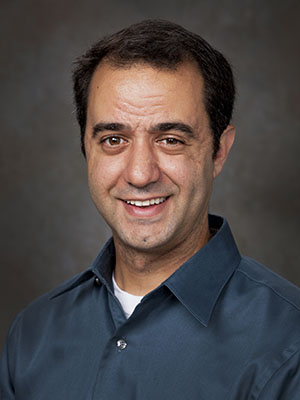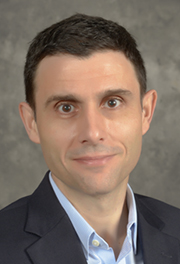
In the United States, poor diet contributes to more than half of premature deaths related to cardiovascular and metabolic disease, including Type 2 diabetes. A team of researchers at the Precise Advanced Technologies and Health Systems for Underserved Populations (PATHS-UP) center at Texas A&M University are developing a new way to approach diet monitoring to benefit the more than 30 million Americans living with Type 2 diabetes as well as decrease the risk of progression past prediabetes.
The team, led by principal investigator (PI) Dr. Bobak Mortazavi, recently received a grant from the National Science Foundation’s Smart and Connected Health program to support their work.
Current methods of recording meals and tracking macronutrients — carbohydrates, protein, fat and fiber — can be inaccurate and difficult to use. Many food diaries require manual entry and require an individual to estimate how much of each macronutrient is in their food.
“Food diaries are invaluable in a number of medical interventions (e.g., diabetes, cardiovascular disease), but they are difficult to maintain since they require manual entry,” said Dr. Ricardo Gutierrez-Osuna, co-PI on the study and professor in the Department of Computer Science and Engineering. “Our objective is to develop algorithms that can predict the macronutrient composition of a meal automatically by analyzing how blood glucose changes after the meal.”

The Texas A&M team plans to take the recording process from a different direction. Studies have shown that the shape of blood glucose changes based on intake levels of different macronutrients. Their solution — continuous glucose monitors with automated machine learning. If researchers can analyze the shape of the blood glucose after a meal, they can reverse engineer the results to break down the macronutrient intake.
Mortazavi, assistant professor in the Department of Computer Science and Engineering, said one application of this technology would allow individuals to log the makeup of meals even when they’re in places where they have no knowledge or control over the ingredients.
“This will also enable diet intervention studies for the health care industry, understanding the changes in glucose response to meals at an individual level and allowing users to understand the differences in their responses based upon the differences in the meal macronutrient compositions, enabling clear intervention plans for changing diet and health,” Mortazavi said.
The work funded by the grant will be focused on developing the machine-learning algorithms to predict food macronutrients from glucose responses.
“We are very grateful for the opportunity to work on this project, which we view addresses a critical need in automated diet logging,” Mortazavi said. “The NSF Smart and Connected Health program has been uniquely positioned to create important new personalized sensing paradigms and analytic strategies that foster clinical care. We are excited to get started.”

The researchers are collaborating with the Sansum Diabetes Research Institute in California. Mortazavi said the institute has experts in treating diabetes, the interaction with participants that enroll in studies and how best to make technology accessible to individuals wishing to improve their care.
The collaboration will involve data collection efforts and translation of findings toward the end of the project.
“Once the user studies and data collection are complete, the main challenge will be for us to develop the machine-learning algorithms,” Gutierrez-Osuna said. “We’re trying to solve a problem that is computationally very difficult.”
Mortazavi said a broader impact of the work is enabling patients and physicians to become better educated on how a body responds and develop a more personalized diet intervention strategy.
“This project would be helpful to clinicians to provide new information to support positive behavior change to reduce the risk of or progression from prediabetes to Type 2 diabetes, and would make it easier for patients to passively and accurately track nutritional components of their diet, potentially leading to healthier diets and improved health,” Mortazavi said.